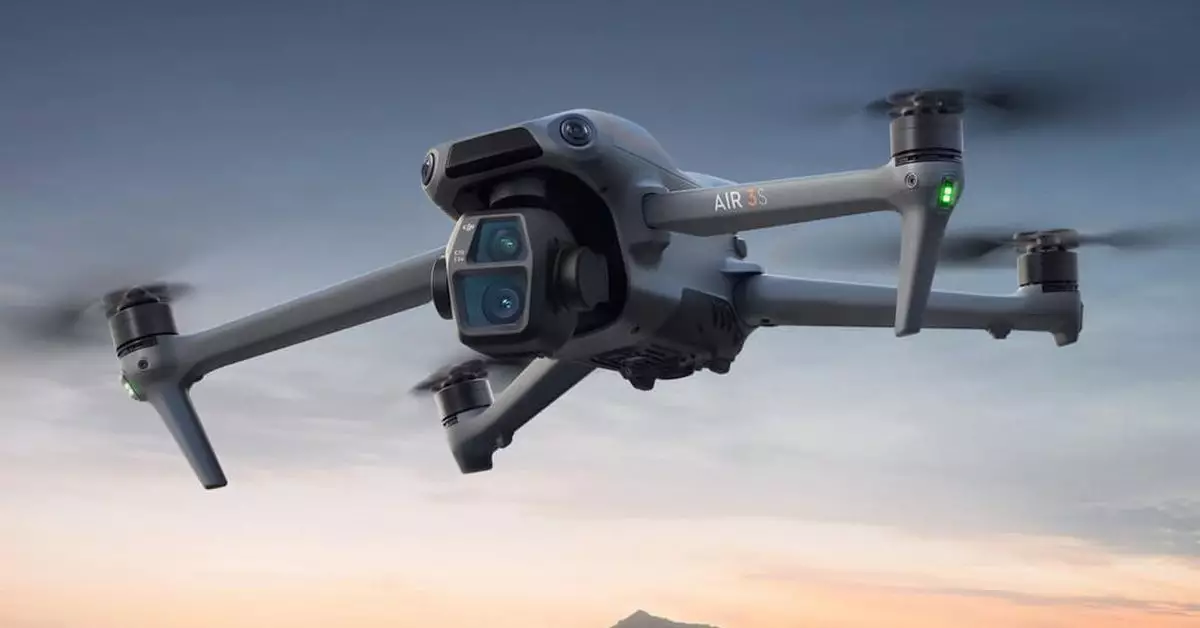The world of consumer drones has seen remarkable growth over the past few years, with Chinese company DJI emerging as a leader in the field. However, recent developments suggest that the path for this technologically advanced company may be fraught with more challenges, particularly concerning its supplies to the United States. This piece aims to break down the current situation DJI faces with U.S. import restrictions, analyze the implications, and explore the broader context of U.S. regulatory scrutiny of foreign technology.
DJI has carved out a dominant position in the global drone market, renowned for its innovative designs and advanced technology. The company has built a reputation for high-quality drones accessible to both hobbyists and professionals alike. However, ongoing geopolitical tensions complicate the time-honored business dynamics between nations. Recently, DJI announced its latest flagship consumer drone, the Air 3S, but could not guarantee availability in U.S. retailers. This surprising turn of events raises questions about the implications of U.S. import policies and regulations on the company’s operations.
DJI has indicated that the current restrictions preventing the free import of its drones into the U.S. are not due to an outright ban but stem from broader concerns raised by the Department of Homeland Security (DHS). The U.S. government’s scrutiny has increasingly focused on the origins of technology products, specifically those manufactured in China. DJI claims that U.S. Customs and Border Protection (CBP) is leveraging the Uyghur Forced Labor Prevention Act (UFLPA) to justify the blockage of its products.
Central to this discussion is the accusation that companies could inadvertently benefit from forced labor practices occurring in regions of China, notably Xinjiang, where significant human rights violations have been reported. Despite being removed from the UFLPA Entity List, DJI previously found itself on the Department of Commerce’s Entity List, pointing to allegations regarding its collaboration with the Chinese government for surveillance activities. These complexities underscore that DJI is navigating a minefield of legalities and political perceptions in the U.S. market.
In a bid to address the allegerations and regain trust, DJI has publicly stated that it does not engage in forced labor and complies rigorously with U.S. laws and international standards. The company has initiated a response campaign, including a blog post aimed at clarifying its stance. DJI asserts it manufactures its products in Shenzhen and Malaysia, away from the controversial Xinjiang region. It claims to provide documentation to U.S. Customs to substantiate these assertions and hopes for a resolution to the import restriction issue.
However, the differentiated responses from DJI highlight a larger point of concern: even if the company provides satisfactory documentation, the climate of suspicion surrounding Chinese technology firms remains a significant barrier. The U.S. government has previously restricted not only sales but also the applications of such technology.
The situation with DJI raises critical questions about the future of consumer electronics in the U.S. Firstly, unless a comprehensive resolution is achieved, the Air 3S may only be available through limited channels, such as the company’s own e-commerce platform. This restriction could drastically affect sales, pressuring the company to reevaluate its distribution strategies.
Moreover, if Congress indeed proceeds to implement stricter regulations that may block DJI products entirely, it could create a chilling effect on both current and would-be drone enthusiasts in the U.S. While existing drone users may still operate their devices, future manufacturers might reconsider their investments toward a market that poses growing regulatory risks.
Furthermore, this complexity doesn’t only have implications for DJI. The situation may deter other foreign tech firms from entering the U.S. market or collaborating with American entities for fear of similar repercussions.
As technological advancements continue to unfold, the tension between innovation and regulation remains evident. DJI finds itself at the crossroads of this dynamic, grappling with the implications of U.S. import restrictions while striving to maintain its foothold in a crucial market. The unfolding saga supports the notion that companies must be agile and responsive in adapting to regulatory environments shaped by geopolitical currents while ensuring their operations align with ethical standards. Whether DJI manages to navigate these choppy waters effectively will likely serve as a bellwether for other foreign tech companies eyeing the U.S. market.

